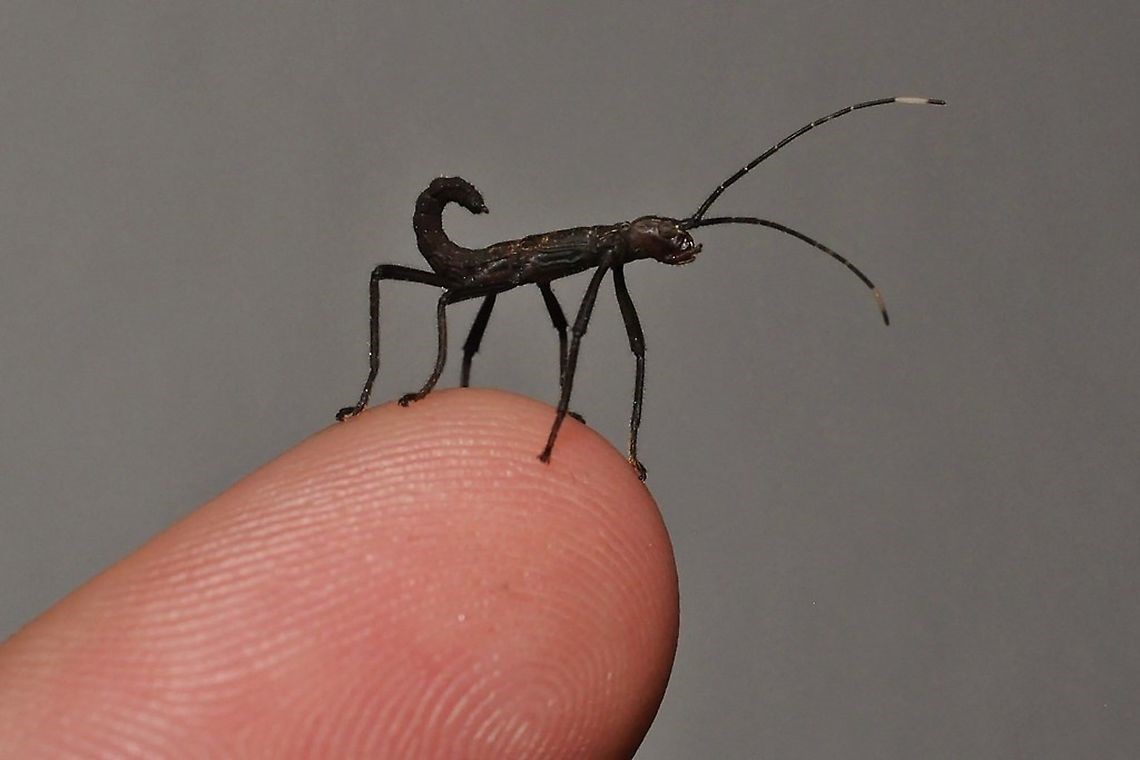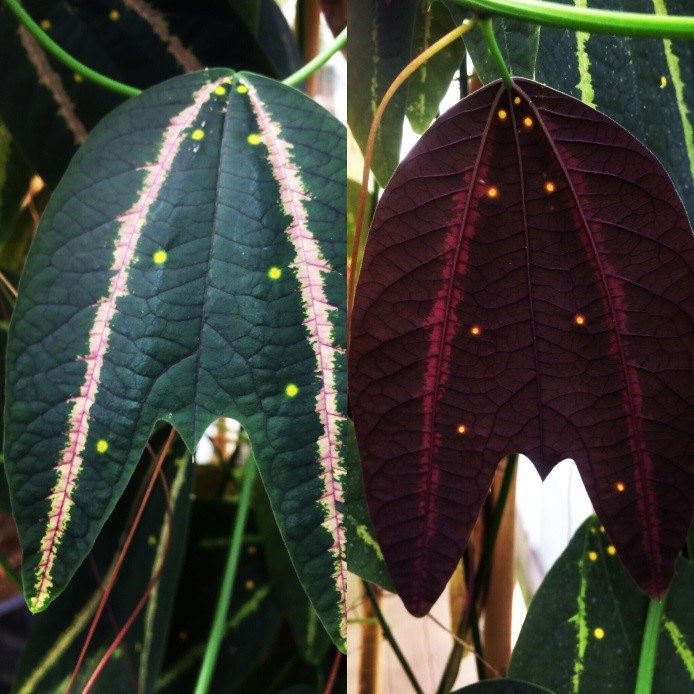Meet Lois’s baby cousin, Amorphophallus paeoniifolius. It may not be as large or as smelly as the corpse flower (Amorphophallus titanum) that bloomed at the Houston Museum of Natural Science in 2010, but that doesn’t make it any less awesome! It’s blooming in the Cockrell Butterfly Center right now, and by the end of the weekend, it should be fully open and ready for a big debut.

A. paeoniifolius bloom beginning to open. Photo by Soni Holladay.
Lois and this flower, also known as the elephant foot yam, are both Aroids, being of the Amorphophallus genus, characterized by the spathe and spadix floral structure and sharing the same distinct life cycle. The plant consists of an underground storage organ called a tuber, which differ in size and shape between plants and species.

As the bloom began to open, we placed it in the CBC for our guests to observe. Photo by Soni Holladay.
When the conditions are right, A. paeoniifolius (pronounced pay-owe-knee-foe-lee-us) sends a single leaf out of the center of the tuber, which looks a lot like a small tree. The leaves typically have a tall, sometimes spotted or bumpy petiole resembling a tree trunk that branches out at the top to form leaflets. A paeoniifolius gets its name from the look of its leaflets, which recall the foliage of a peony plant. This leaf stage can last for several months — maybe up to a year — after which the leaf slowly starts to break down. It turns yellow, then brown, and eventually it falls over.

The spathe will continue to open through the weekend, giving the bloom the look of a skirt around the central spadix. Photo by Jason Schaefer.
The tuber then stays dormant for between three and nine months. If the tuber is developed enough to support an inflorescence, or flower growth, it will bloom. The blooms of an Amorphophallus are spectacular at any size, though not as stinky. Size doesn’t matter as far as stench goes. We sometimes have smaller species blooming in our greenhouses that can make your nosehairs curl.

This close, the bloom smells faintly sour, like dumpster garbage. Photo by Jason Schaefer.
As the plant continues to bloom, the spathe will widen and “collapse” open, giving it the look of a skirt around the spadix. Right now, it looks more like a collar. Come visit the CBC this weekend to have a look (and a smell) at this fascinating plant, on display right next to its larger cousin, currently in the “tree-like” stage of its life cycle.
Editor’s Note: The A. paeoniifolius flower enjoyed a long weekend at HMNS, then moved on to the next stage in its life cycle. Look for updates on this flower, the corpse flower and other Amorphophallus species on this blog and in social media.








